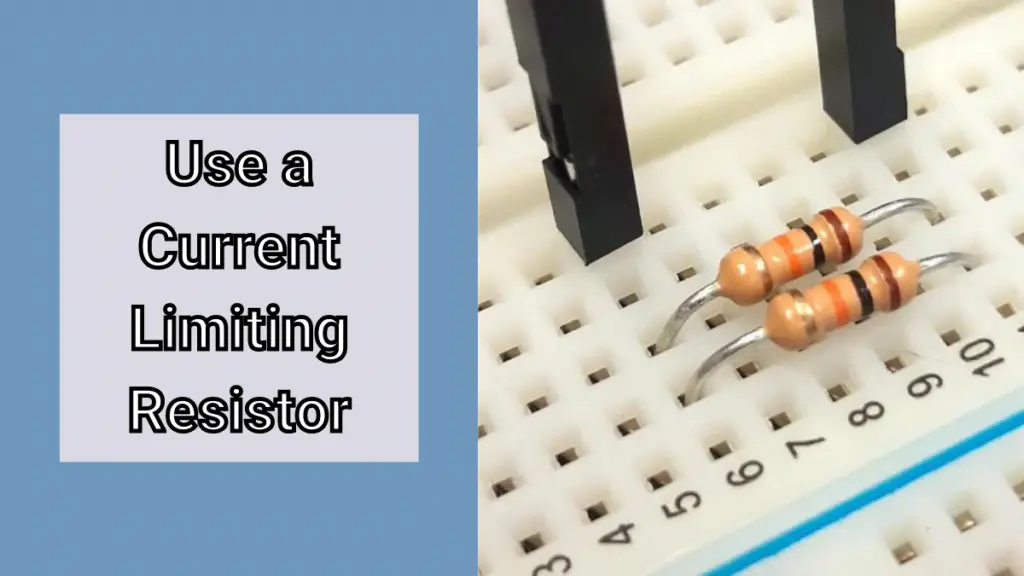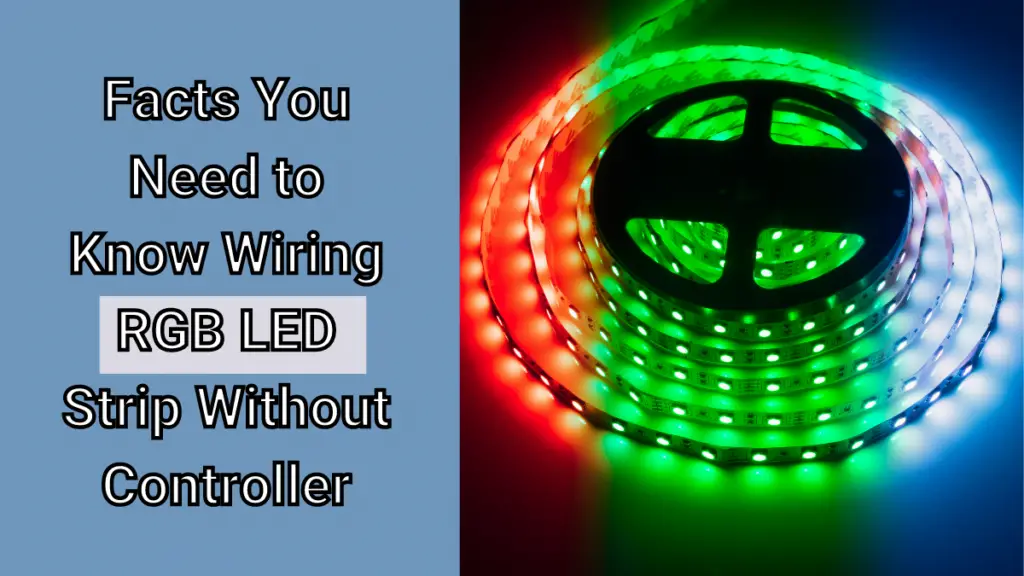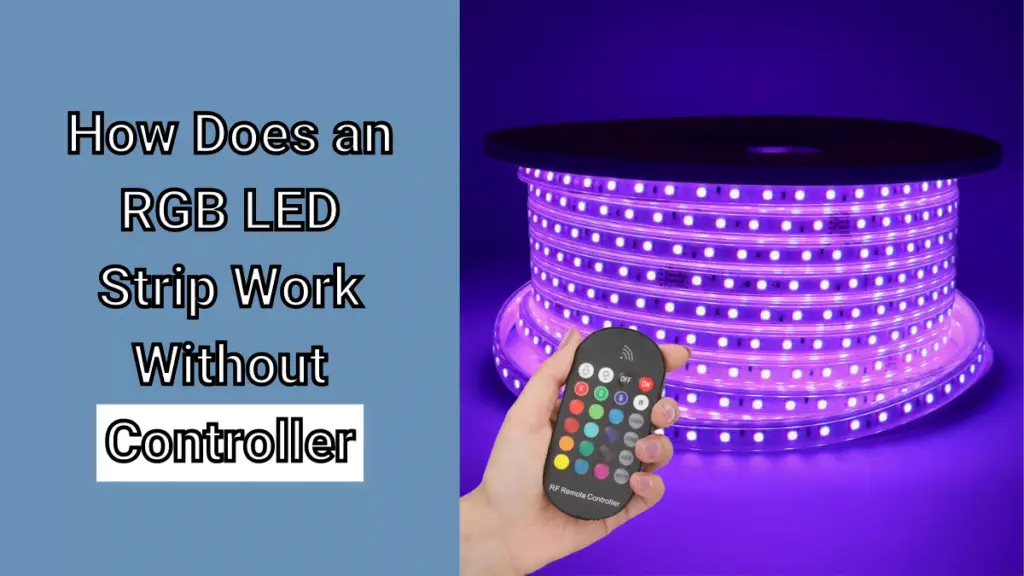How to Wire RGB LED Strip Without Controller? An LED strip light is controlled by the controller. The controller is used to determine the color of the lights. With the press of a button, you can change the voltage outputs of each of the 3 primary colors (Red, Green, and Blue) and provide the output color accordingly. Therefore, wiring the cables without a controller may prove to be difficult.
In that case, you will have to wire each of the cables differently and manage a device or process to control the voltage of each color-changing light wire. It gets a bit difficult if you work with RGB-IC strips. In a comparison of RGB vs RGB-IC, there is one key difference.

There is a built-in IC in an RGB-IC strip. It helps the strip display each of the three colors from any bulb in contrast to only a singular color in the RGB strip. So let’s learn how to wire RGB LED strip without controller.
Nevertheless, you might want to use wires without a controller, or maybe your purchase didn’t provide one. So, here are some ways you can learn how to wire RGP Led strip without controller.
Ways on How to Wire RGB LED Strip Without Controller
There are a few easy methods that can be used as a replacement for a controller. These options are also relatively cheap and easy to find and allow flexibility in case of customization. The following options are a great alternative if you want to learn How to Wire RGB Led Strip Without Controller.
Arduino Microcontroller
A microcontroller is used to connect all the wires with a separate device called a microcontroller. This will allow you to control the output of each of the colors through the device. However, it is advisable to make sure that your power source can provide enough voltage to run the three wires separately and not cause a failure
External Power Supply
A simpler alternative is using an external power supply. This requires a bit of technical knowledge to connect the wires and the output devices. Otherwise, the process is quite simple.

You can use an external power supply to provide power to each of the wires on their own and power them accordingly. The color-changing lights must be manually powered to configure your required color output.
Use an N-Channel MOSFET (Low Voltage)
When finding ways to wire RGB led strip without controller, using a transistor may not be the first choice. An N-Channel MOSFET is a transistor. It can be configured to control the flow of electrons through the circuit.
Therefore, low voltage can be distributed evenly all over the circuit. However, if you wish to run the lights at maximum brightness, you will need to simultaneously power all three wires.
Wiring The Strip to a Battery Pack
A more makeshift approach is to use batteries in conjunction with the wires. In this method, you will have to connect the wires to the battery manually.
Each of the color-changing lights will have to be connected to a different battery to power them. The wiring is quite easy so setting up this kind of system shouldn’t be difficult.
A disadvantage is that you cannot control the luminosity of the lights. However, the risk of overheating is minimized due to the battery running out before dangerous temperatures can be reached.
Use a Current Limiting Resistor
A current limiting resistor limits the voltage through each of the color-changing wires. This will allow you to adjust the brightness of each of the wires simultaneously as the voltage is suppressed to a certain degree.

The flexibility in this kind of system is greater than before. However, you will have to provide higher voltage in comparison to reach higher luminosity.
Power Distribution Board (PDB)
A Power Distribution Board splits continuous voltage from a central source to each of the color-changing lights. The RGB strips can simultaneously be adjusted to emit the desired color through a PDB.
The circuit can be wired to provide the same voltage as well and modified using transistors or resistors. This is one of the more flexible options available.
Why Do You Need A Controller?
A controller is a basic input device that will determine the voltage flow into the wires. In easier terms, the wires will receive the required power to display the light color you wish to see emitted from the color-changing lights. Between RGB and RGB-IC variants, there may be a difference.
The IC variant can display any of the three primary colors from each of the lights while the regular version can only display one version of each color.
Without a controller, it is difficult and requires manual work to display your desired color. An RGB-led strip is usually used to create ambiance and beautify the environment. If you are unable to do that easily, the use of the color-changing lights can be questioned.
The controller does the manual work of changing the voltage and power outputs to each of the bulbs. Removing the controller makes the user have to do the manual work instead.
Therefore, you can ask yourself exactly How to Wire RGB Led Strip Without Controller. The following is a generic step-by-step process that you can follow to get an idea and use any of the methods previously mentioned in setting up these color-changing lights.
Facts You Need to Know Wiring RGB LED Strip Without Controller

Identify Voltage Lines
There are wires for each of the color bulbs. Each pairing will have three colored wires which indicate the positive, negative, and ground wires. The black wire is the electricity-carrying wire and must be handled carefully. The positive wire will be red. The neutral wire will be gray or white and will return electricity into the circuit.
Wiring Process
After identifying each of the lines, it is time to apply a power source for them. Any sort of power supply or battery will be sufficient. Remember that each pair or trio must be connected for each corresponding color of the RGB strip. So You have to connect the wires for the red bulb, the green bulb, and the blue bulb respectively.
Connecting to a Data Controller
A data controller is used to direct the pixels in showing the desired color. You can solder the ends using wire connectors. This part is relatively easy.
Using the Data Controller
Afterward, you can use the data controller to issue commands After the device is connected, it will automatically send signals into the wire and change the output depending on your input.
Points to Consider Before Wiring A RGB LED Strip Without Controller
Power: Make sure the RGB led strip has power before attempting to utilize it without a controller.
Identification: The RGB led strip’s lights are referred to as pixels. Positive, negative, and ground are the three prongs that each pixel has, making it resemble a miniature lightbulb. Therefore, you’ll need to connect the power supply’s ground, positive, negative, and ground to the RGB led strip.
Connection: you must identify the ground wire (positive) and negative wires from the RGB led strip. Additionally, you’ll need a method for determining which color goes with each voltage line.
Checking: Choose the volt-ohm meter (v–µ) setting when you turn it on. You will be presented with a small image of a battery and two arrows.
Expertise: It is recommended to not tamper with electronics if you do not know what you are doing. The hot wire may cause damage to you and your property. So, best not to tangle with machinery and circuitry without prior knowledge about How to Wire RGB Led Strip Without a Controller
How Does an RGB LED Strip Work Without Controller

A controller works by sending signals to the wires to display the lights. When you learn How to Wire RGB Led Strip Without Controller, you will use replacements. Some examples listed in this article talk about using direct power sources for the wires or using resistors to suppress the inflow. At the end of the day, these methods will provide the power of your color-changing lights but it is very little in the way of flexibility.
To be flexible with your outputs, you will need more sophisticated devices which will control the flow of electricity in your lights. Between RGB and RGB-IC lights, the built-in IC helps in this process by providing the same commands for all available colors instead of giving each of them separate commands.
Should I Use A RGB Controller?
The controller or device will send signals through the data wire and the corresponding light will change its output based on that input. With the combination of all three colors, you can get your desired color. In foregoing a controller, this color variation is difficult to achieve as you have to manually adjust the resistance and voltage flow for each of the wires.
Therefore, it is easier to skip this hassle and go for a controller that will do all the work for you. However, there is a certain feeling of accomplishment if you are technical enough to achieve the same result by hand.
FAQs: How to Wire RGB LED Strip Without Controller
How to Wire RGB LED Strip Without Controller
The color wavelength of an LED cannot be changed once the LED is manufactured, as it is a fundamental characteristic determined by the semiconductor materials used in the LED chip. To achieve different color wavelengths, manufacturers need to use different materials, so the wavelength is fixed at the time of production.
How to wire RGB LED without controller?
Wiring an RGB LED without a controller can be done directly to a power source. You’ll need to connect each of the three color pins (Red, Green, and Blue) to the positive terminal of a power source, while the common anode or cathode pin should be connected to the corresponding negative terminal. However, to control the colors and brightness, you’d need some form of external control, whether a dedicated controller or a microcontroller like an Arduino.
How do you control LED strips without a controller?
Controlling LED strips without a dedicated controller can be challenging, as controllers are specifically designed for this purpose. However, you can manually control the LED strips by connecting them to a power source with a simple on/off switch, which will allow you to turn them on and off as needed, but you won’t have the ability to change colors or effects without a controller. For more advanced control, you may need to consider using a microcontroller like an Arduino or Raspberry Pi to program and customize the lighting effects.
Can LED strip work without driver?
In many cases, LED strips require a driver or power supply to operate efficiently and safely. The driver converts the voltage from your electrical source to the appropriate voltage and current for the LED strip. Attempting to power LED strips without the proper driver may lead to inconsistent performance, reduced lifespan, or even damage to the LEDs.
Read Also: How To Make DIY LED Light Colors
Conclusion: How to Wire RGB LED Strip Without Controller
So, when you ask yourself How to Wire RGB Led Strip Without Controller, you might not think of so many alternatives. The basics of wiring are not that complex. The hard part is the manual work behind so many inputs, outputs, resistors, and voltage supplies. It may be a fun DIY project for you. On the other hand, the average consumer may just resort to installing or buying a controller and avoid all the hassle altogether.
Read Also: How to Make Custom Color on LED Lights

My strong expertise is illuminating spaces. With a keen eye for detail and a passion for transforming environments through lighting, my dream is to leave indelible mark on the world of light design. Below are few facts of my biography, highlighting career and hobbies. Click here to contact me.
